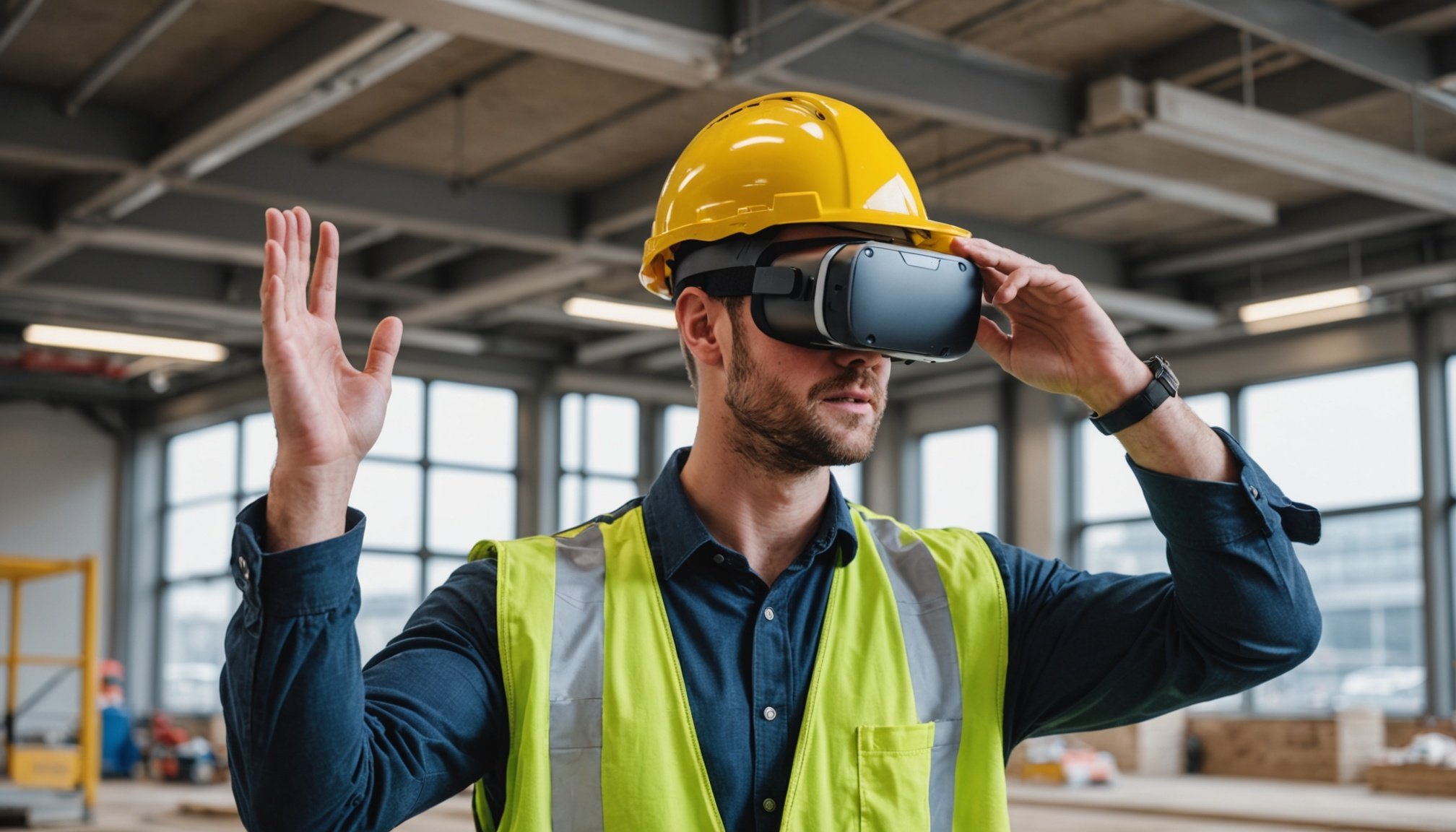Overview of VR Technologies in UK Construction
Virtual reality in construction has seen a remarkable transformation, establishing itself as a cornerstone for construction innovation. Initially, VR technologies began their journey in the UK construction landscape as experimental tools in the late 1990s. However, their capabilities have evolved into highly interactive and immersive environments, capable of simulating real-world scenarios with significant precision and detail.
These advancements allow professionals to explore project sites virtually, overcoming geographical limitations and enhancing decision-making processes. The ability to model 3D environments and run simulations in virtual reality in construction facilitates enhanced design accuracy, enabling developers to foresee potential challenges and devise solutions before actual construction commences.
In the UK, several key players have pioneered the use of VR technologies in construction. Companies such as Balfour Beatty and Mace are at the forefront, leveraging VR not only for project visualization but also for safety training and risk assessment. Their initiatives underscore the growing footprint of VR in redefining construction practices.
This evolving landscape shows how construction innovation continues to be driven by the integration of cutting-edge VR tools, promising a future where virtual and physical realities converge for improved project outcomes.
Also to read : Empowering Student Success: How UK Universities Leverage AI Insights to Enhance Support Services
Case Studies of VR Applications
VR applications in construction have demonstrated significant benefits across various UK projects, offering valuable insights through detailed case studies. Notably, major construction projects such as the Crossrail endeavor have embraced VR to enhance design coordination and streamline construction phases. By employing immersive visualization, project teams could analyze complex designs and foresee logistical challenges.
Major Construction Projects Utilizing VR
In the realm of UK construction projects, VR integrations are increasingly recognized. The Thames Tideway Tunnel project leverages VR for safety training, ensuring workers comprehend on-site hazards before physically encountering them. Such applications highlight VR’s contribution to construction innovation, emphasizing precision and safety enhancements.
Success Stories and Lessons Learned
Feedback from stakeholders, such as managers and engineers, reveals transformative shifts spurred by VR. For instance, Birmingham New Street Station utilized virtual reality to simulate architectural changes, fostering better client understanding and approval processes. These case studies underline the importance of VR in bridging traditional methods with technological advancements.
Expert Testimonials on VR Impact
Industry experts consistently advocate for VR’s potential in reshaping construction dynamics. Testimonials emphasize VR’s capacity to revolutionize construction standards, with professionals like architects appreciating how VR fosters collaboration and intuitive design explorations. Through VR applications in construction, the UK’s construction innovation remains poised for continuous evolution.
Benefits of VR in Project Visualization
The benefits of VR in the realm of project visualization within the construction industry are profound. Virtual reality enhances design accuracy and project planning, allowing stakeholders to experience a project’s intricacies before laying a single brick. This clear portrayal enables architects and engineers to spot potential design flaws early, ensuring they address issues proactively.
In terms of improved client engagement and understanding, VR offers a unique advantage. Clients can virtually walk through their prospective buildings, gaining a tangible sense of the space. This immersive experience boosts confidence and satisfaction, leading to more informed decision-making and reducing misunderstandings.
Moreover, VR technologies usher in time and cost savings through virtual simulations. By preemptively analyzing construction sequences and logistics, project teams can optimize resources and timelines. This foresight minimizes costly rework and delays, translating into smoother processes and budget adherence.
Adopting VR in construction not only enhances visualization but transforms traditional methods, paving the way for construction efficiency. The integration of VR tools empowers professionals to deliver precision-driven projects with ease. These advancements underscore VR’s pivotal role in reshaping how the construction industry approaches planning and execution.
Challenges in Implementing VR Solutions
In the construction industry, implementing VR technologies poses notable challenges. Resistance to change is a significant hurdle. Many construction firms are entrenched in traditional methods, making them hesitant to adopt new VR technologies. This reluctance often stems from concerns about disruption to existing workflows and the perceived complexity of integrating innovative tools.
Financial considerations also play a crucial role. The initial investment for deploying virtual reality can be substantial, encompassing the cost of hardware, software, and training. Many companies scrutinize the return on investment (ROI) of these technologies. While VR can lead to long-term savings and efficiency, the upfront costs can be a deterrent, especially for smaller firms with limited budgets.
Technical barriers present another challenge. Successful implementation requires not only the acquisition of the right tools but also the development of skilled personnel. Construction firms often face the daunting task of training their workforce to effectively use VR technologies. This need for technical knowledge adds another layer of complexity to integration efforts.
Moreover, technical support systems must be robust to handle potential issues. Overcoming these implementation hurdles requires strategic planning, investment in education, and a clear vision of the long-term benefits of VR technologies in the construction sector.
Future Trends in VR for Construction
The future of VR in construction is poised for transformative trends. Emerging technologies in VR advancements focus on blending AI and machine learning (ML) with VR applications to automate processes and enhance predictive capabilities. These integrations promise to refine design accuracy, enabling smarter simulations that predict outcomes and resource allocations more effectively.
Looking forward, technology advancements in sustainable construction leverage VR to design eco-friendly structures with precise specifications that reduce waste. VR offers opportunities to simulate energy-efficient environments, providing a clearer understanding of sustainability impacts.
The anticipated future of VR in construction envisions VR as a testing ground for innovative building materials and methods, potentially revolutionising construction practices. As VR continues evolving, the inclusion of tactile feedback may enhance the immersive experience, allowing professionals to “feel” materials within virtual environments for better decision-making.
Lastly, the future of VR in construction integrates with smart technology, enabling real-time adjustments and enhancements during construction. The convergence of these technologies sets the stage for a substantial redefinition of building practices, presenting exciting possibilities for more efficient and sustainable development.
Practical Applications of VR in Project Management
Embracing project management VR tools allows construction professionals to radically transform their workflows, significantly enhancing efficiency. VR integration in these processes presents unique opportunities, particularly when conducting virtual site tours. Such tours enable project managers, clients, and stakeholders to explore evolving projects in real-time from any location, thereby enhancing planning and collaboration efforts.
Virtual Site Tours
Virtual site tours mitigate logistical challenges by providing interactive, detailed views of construction sites. This eliminates the need for frequent in-person visits, reducing time and travel costs. Managers can engage stakeholders in walk-throughs, demonstrating project progress with precision.
Design Reviews and Mockups
Through VR, teams conduct immersive design reviews and mockups. By engaging stakeholders in 3D virtual environments, teams identify potential design issues early, enabling proactive corrections and ensuring flawless execution. This fosters informed discussions and aligns project outcomes with client expectations.
Client Presentations and Stakeholder Engagement
VR is instrumental in client presentations and stakeholder engagement. Utilizing VR, professionals create compelling presentations that increase client buy-in and project approval rates. This interactive approach ensures stakeholders understand project intricacies, enhancing decision-making and satisfaction. The application of VR in project management ultimately drives management efficiency.











